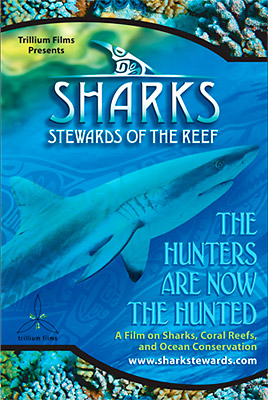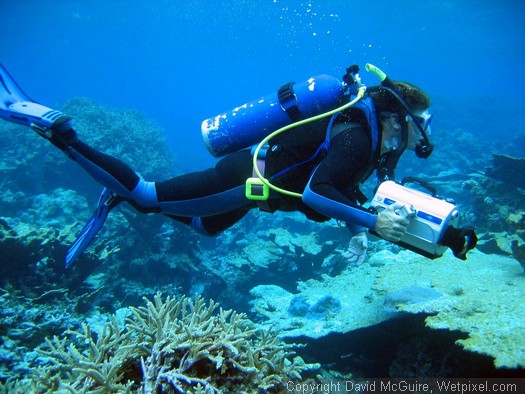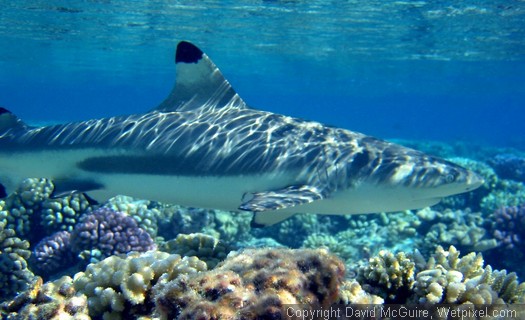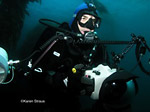Review of Sharks: Stewards of the Reef DVD

Sharks kill about five humans worldwide every year. Humans kill about 100 million sharks.
Chances are you already knew that. Those numbers aren’t shocking to serious divers. But Joe and Susie Sixpack, who have long been terrified by Jaws movies and Shark Week TV orgies, are in serious need of education. David McGuire’s film, Sharks: Stewards of the Reef, is an attempt to set the record straight.
Told from the standpoint of a native Hawaiian, the 25 minute film demonstrates the importance of sharks to the health of the marine ecosystem in their role as apex predators. It also documents how longline fishing and shark finning have decimated shark populations. The narrator is supported by three expert witnesses: Dr. Enric Sala of Scripps Institution of Oceanography, Sonia Fordham of Ocean Conservancy, and Peter Knights, executive director of WildAid.

As a long time California diver, McGuire had noticed the severe decline in the local blue shark population. Subsequent sailing voyages in the south Pacific further revealed stark differences between healthy reefs and those devoid of sharks. In ports McGuire also saw tuna fishing boats, their rails lined with drying shark fins. That provided the impetus for his first venture into film. He stated, “Particularly we want to reach the consumers of shark fins, so that they will be informed of the dire impacts of shark finning.” A Chinese language version is being prepared that will screen on China Public Television prior to the Olympics. It’s also being translated into Spanish for screening in Ecuador to help with the Galapagos campaigns.
At the present time the film is being shown at film festivals, aquariums, dive clubs, and universities. That’s like preaching to the choir. But plans are underway to screen it on public television in the United States next year. The DVD version is available on McGuire’s website, www.sharkstewards.com. Twenty five percent of the gross on each sale will be donated to the Ocean Conservancy Shark Campaign.

The underwater shark footage is unremarkable, essentially because McGuire avoided shark feeding situations. Filmed primarily in the Tuamotus, there are tranquil scenes of whitetip, blacktip, and gray reef sharks calmly cruising over shallow reefs. Most serious videographers have footage in their libraries with lots more impact. However, the scenes of sharks caught on longlines, and especially of fins being cut off and the bleeding bodies thrown overboard provoked a strong gut reaction of revulsion in this viewer. Shot by videographers from WildAid and the Whale Rescue project, it’s far more powerful than anything I’ve seen in slasher movies. I don’t see how any viewer could sit down to a bowl of sharkfin soup without pangs of guilt overcoming their hunger. The soup in the movie looks gelatinous and yucky, generating skepticism about its reputed aphrodisiac or prestige qualities.

This is a message film that everyone who loves the ocean will take to heart. The challenge will be to communicate that message to the rest of the world. Campaigns against shark finning run counter to long ingrained traditions of the world’s most populous country, and of its progeny around the globe. But like drug trafficking, the answer lies in slashing demand. Only consumers can save the sharks.
The film concludes with an old Hawaiian saying: “Care for the sea and the sea will care for you.” We are the real stewards of the reef.
The DVD is available for $16 from:
Sharks DVD Sales
PO Box 1767
Sausalito CA 94966.
... or, you can order it online via Paypal.
Twenty five percent of sales will be donated to the Ocean Conservancy Shark Campaign. For more information see their website, www.sharkstewards.com.
-Eric Hanauer
Author Bio:
